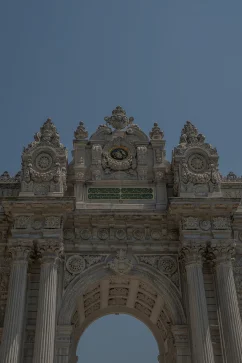Galata Tower

About the Galata Tower
The Galata Tower is a well-known landmark that towers gladly over Istanbul’s horizon and gives broad perspectives on the city and its environment. For anybody hoping to submerge themselves completely in Istanbul’s set of experiences and culture, visiting the Galata Tower is a must!
The Galata Tower, which has elements from Byzantine, Genoese, and Ottoman history, represents Istanbul’s diverse heritage today. Because of its unique cone-shaped roof and large stone walls, the Galata Tower is a well-known city symbol. Visitors can reach the Galata Tower observation deck using lifts and a spiral staircase to enjoy breathtaking views of Istanbul’s cityscape and landmarks. The view from the Galata Tower tours provides a clear and beautiful perspective of the city, spanning from the lively streets of Beyoğlu to the calm waters of the Golden Horn.
History of the Galata Tower
The history of the Galata Tower is deeply intertwined with the rich tapestry of Istanbul’s past. Its origins date back to the fifth century CE when the Byzantines constructed a wooden tower known as Magalos Pyrgos (Great Tower) to oversee the city. However, the current structure was first built in the mid-14th century by the Genoese, who had a colony in Galata then. Initially named Christea Turris (Tower of Christ), it was constructed in Romanesque style. It served as a defensive post and lookout, providing a strategic vantage point for monitoring maritime activity in the Golden Horn and safeguarding the city from potential threats. Over the centuries, the tower witnessed various uses, from being briefly utilized by the Ottoman military band to serving as a fire observatory. In the modern era, after restoration and renovation, the Galata Tower was opened to the public in 1967, offering panoramic views of Istanbul and housing a cafeteria at its top.
One of the most captivating stories associated with the Galata Tower centers around the legendary Ottoman aviator Hezarfen Ahmet Çelebi, who is said to have attached wooden wings to himself and successfully flown from the tower across the Bosphorus to Üsküdar in the 17th century. This daring feat has become a legendary part of the tower’s history, adding to its mystique and allure. Furthermore, the tower has been the backdrop for various tales and legends, including one that revolves around a romantic liaison between a beautiful princess and a commoner. These stories, along with their architectural significance and historical relevance, contribute to the Galata Tower’s status as an iconic symbol of Istanbul, attracting visitors worldwide to experience its rich history and breathtaking city views.

Tips for your visit to the Galata Tower
- Drop by at nightfall: Dusk is one of the main times to visit the Galata Tower because the sky is painted a delightful shade of pink and orange, which makes for a phenomenal foundation for all-encompassing cityscape shots.
- Get Your Tickets Ahead of Time: Consider purchasing your Galata Tower tickets online to abstain from remaining in line. By doing this, you can sidestep the arrangement and invest more energy in taking in the all-encompassing vistas.
- Pack a camera or cell phone: Capture the amazing views from the Galata Tower. You can see unmatched views of Istanbul’s skyline from the tower, including famous landmarks like the Blue Mosque and the Hagia Sophia.
- Wear Appropriate Clothes: During the summer, the Galata Tower can get crowded, and the stairs to the top can be steep. So, if you plan to go to the Galata Tower, wear comfortable shoes and appropriate clothing.
- Explore the Area: Take the Galata Tower map with you, and take some time to explore the interesting neighborhoods of Beyoğlu. You’ll find trendy restaurants, fancy shops, and art exhibitions there.
Galata Tower tickets
When you arrive at the Galata Tower, you can buy tickets at the ticket station. The Galata Tower tickets price depends on whether you want to visit the museum and the lower part of the tower or go up to the observation deck. Still, the cost usually ranges from 650 Turkish Lira for an adult ticket, and entrance is free for children under seven. You can also explore the tower with an informative audio guide for a small extra fee.
Exploring the Galata Tower is possible after getting tickets at the ticket station. The price of the tickets changes based on whether you want to see the museum and the lower part of the tower or go up to the observation deck. Additionally, you can enhance your experience by using the informative audio guides for a small additional charge to get a Galata Tower guided tour.
How to arrive to the Galata Tower
The Galata Tower is a helpful area for travelers visiting Istanbul since it’s easy to get to by taxi, public transportation, or walking. Situated in the focal point of Beyoğlu, it is effectively open by foot from various notable locales, upgrading its charm as a high-priority symbol in the city.
By Public transportation: For those arriving by public transit, Karaköy is the closest tram stop to the Galata Tower and is just a short walk away.
By the Tunel Funicular: Taking the memorable Tunel funicular, which joins Karaköy with the ridge Galata region, is another method for getting to the Galata Tower. It’s an extraordinary strategy to see a bit of Istanbul’s past while getting to the highest point of the Galata Tower.
By Walking: Given the Tower’s focal area, it is not difficult to get to famous places like Taksim Square, known for its climate and developments, and Istiklal Road, a bustling footpath fixed with shops, restaurants, and memorable structures by the Galata Tower walking tour.









